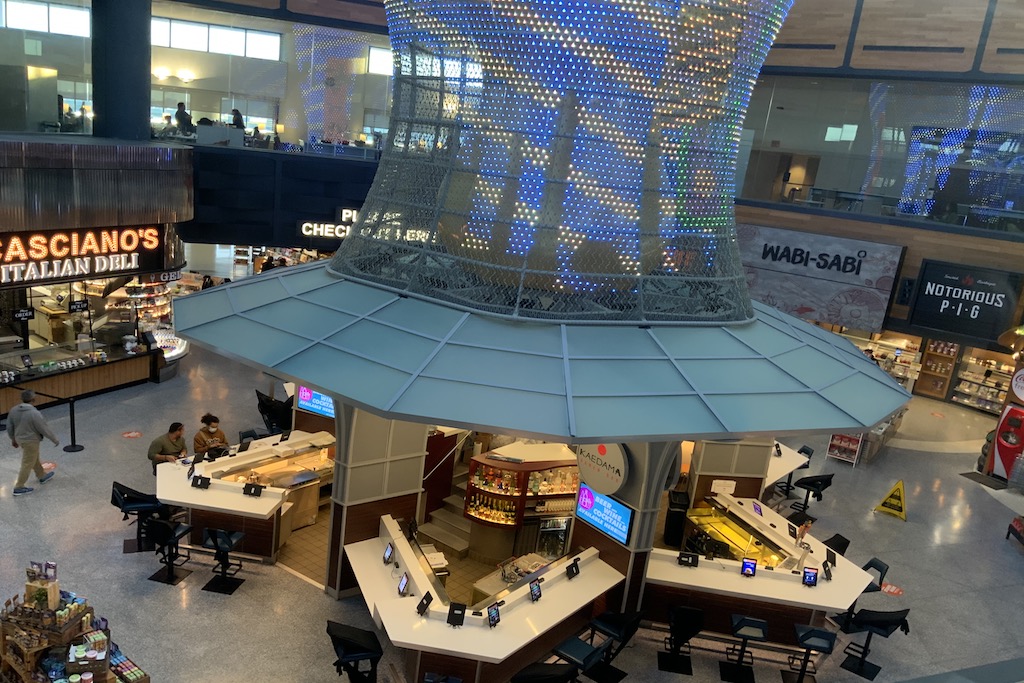U.S. Airport Screenings Top 1 Million: Hiccup or Signs of a Recovery?

Photo Credit: Jason Clampett/Skift
The Transportation Security Administration (TSA) reported a milestone on October 18: It screened more than 1 million people at the nation's airports, the first time the number of screenings topped that number since March. But is this a sign that travel is recovering?
Yes, because TSA throughput has been rising steadily for a few months after dropping well below 100,000 in March and April, when the pandemic first began to spread. Throughput regularly topped 500,000 in July and has been climbing ever since, as Americans felt more comfortable traveling and took their summer vacations.
But Saturday's numbers are still less than half of what they were a year ago, when they were north of 2.6 million. This tracks with what Delta Air Lines CEO Ed Bastian and United Airlines CEO Scott Kirby said last week, during their companies' third-quarter earnings call. Kirby expects demand to be half of 2019's levels until the end of next year, when United believes an effective Covid-19 vaccine will be widely distributed. Bastian said Delta is predicting demand to be about 40% of last year's levels through the end of 2020.
Leisure travel is rebounding faster. Traffic to leisure destinations in Florida, to Las Vegas, and to places like Denver and Salt Lake City (both jumping-off points for national parks and mountain resorts) is about half of last year's level. Traffic at coastal hubs, like New York and San Francisco, remains a fraction of last year's, as quarantine regulations crimp international travel, and also because business travel remains depressed.
This also tracks with what Delta and United reported last week. Both airlines are seeing more traffic at their mid-continent hubs, as leisure travel booms, and less demand at their coastal hubs. Airlines are responding by re-tooling networks away from business-travel centers and to Florida and other leisure destinations. Southwest, for example, has opened several new routes to ski and mountain destinations in the West. The leisure hotspot of Hawaii remains depressed, however, as the state's strict 14-day quarantine has dissuaded holiday makers, although it remains to be seen whether rapid-result testing that airlines like United, Hawaiian, and Alaska are rolling out will boost demand.
So travel appears to be reaching the "steady state" that Kirby forecast last week. Several carriers, including American, Southwest, and Alaska, will report their third-quarter numbers this week, so we'll get a fuller picture. And the TSA trends are encouraging.
But there are a couple of things to keep in mind. One is that that there is a presidential election approaching. Demand typically takes a hit around a major election -- a phenomenon reported worldwide, and not just in the U.S. This election in particular could be fraught, if worst-case scenarios predicting political violence come to pass, although most airline executives appear not to be too concerned.
Of greater concern, however, is the pandemic itself. The U.S. appears to be entering a third wave of the disease. Many of the most recent outbreaks are in the Midwest and in the Mountain states. Although these outbreaks haven't yet affected demand, they could, especially if states and cities re-impose shelter-in-place rules or quarantines. These will, of course, have a corresponding dampening effect on the economy, making people less likely to travel.
In other words, although the TSA throughput data are encouraging, too much is unknown about the disease to say whether the airline industry has reached its steady state.
